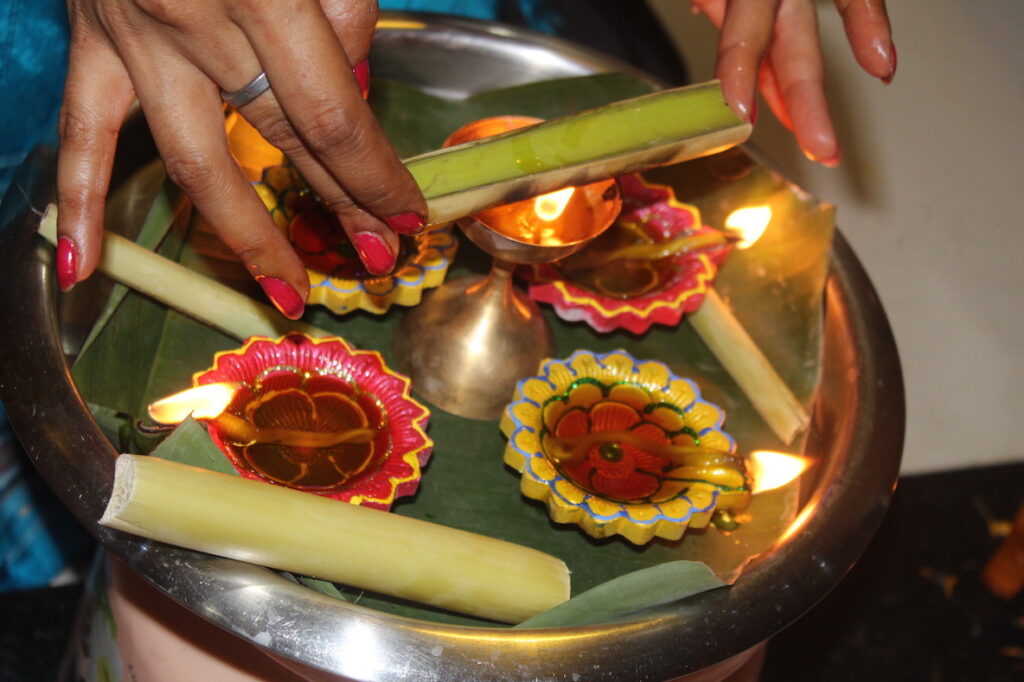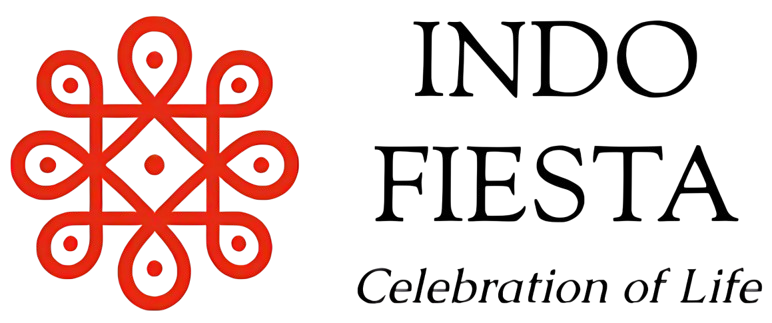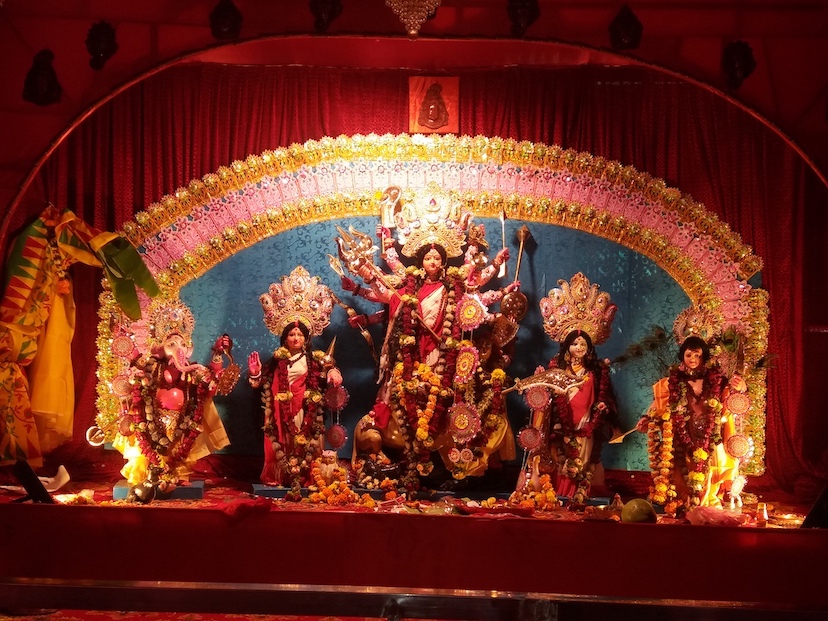In our modern-day lives, when technology has overpowered many mundane work, there’s a constant sense of monotony and stress that drives all of us, from time to time, to seek an escape. Festivals offer the perfect escape from the daily struggles. Reflecting on our fondest memories often brings us back to childhood celebrations shared with family and friends. Who can resist the joy of exchanging gifts, partying, and rejoicing with loved ones?
India, with its vast territory, is a remarkable example of cultural and religious diversity. The country celebrates festivals from all religions with equal enthusiasm, showcasing that unity is found within its diversity. Our rich heritage, shaped over countless generations, has created a distinctive blend of traditions, rituals, and festivals across Indian life and spirit.
Many of these festivals follow the lunar Hindu calendar, which doesn’t align with the solar Gregorian calendar. Given India’s majority Hindu population, it’s no surprise that many of our festivals are Hindu ones. Some celebrations are regional, like Chhath in Bihar, while some, like Deepawali or collectively known as Diwali, are observed across the country. In Asia, the roots of many festivals lay in religion and tradition, many festivals have emerged as a need to celebrate and appreciate nature. With the global debate on climate change and the immense need for increased awareness, such festivals can also act as a catalyst for people to become more ecologically aware and cautious towards their day to day actions.

Connection of Nature in Indian Festivals
The connection with nature has been an integral part of the Indian way of life, and it is evident in the country’s various festivals and celebrations. From the vibrant harvest festivals to the reverence shown towards rivers and forests, these celebrations reflect the deep respect for the natural world.
Hindus have also paid great respect to trees and other plants in their festivals as they are the foundation of life. In Hindu religious texts such as the Puranas great importance has been shown to trees and plants, equating them with Gods. It has been written to treat them as members of the family. Scientists have stated that trees and plants are living beings.
During “Vat Savitri,” women pray to the Banyan tree, which is believed to grant wishes and bring material blessings. As stated in the Agni Purana, the Banyan tree represents fertility and is thought to assist those desiring children. Banana leaves, considered pure and clean, are also used as natural plates for serving food.
According to mythology, the Kalpavriksha, or the wish-fulfilling tree, emerged from the churning of the ocean, Samudramanthan. The Ashoka tree is revered in prayers for the relief of sorrow, while the Amla tree, worshiped in the Kartik month, is believed to house Lord Vishnu. Mango leaves are commonly used in pujas, while the goddess Lakshmi is associated with the sacred fig tree.
Shitala Maa, the goddess associated with poxes, is thought to dwell within the neem tree, revered for its centuries-old use in treating various ailments. Likewise, the neem tree holds sacred status. Rudra, the storm deity who is often equated with Shiva, is linked to the rudraksha tree. Consequently, Shiva devotees frequently wear malas made from rudraksha seeds as a mark of devotion.
The Peepal tree is thought to be the dwelling place of the trinity: Brahma, Vishnu, and Shiva. With Brahma represented in the roots, Vishnu in the bark, and Shiva in the branches, offering prayers and water to this tree is believed to bring blessings.
In Assam, Bihu is celebrated thrice annually, in the months of Bohag (Baisakh), Maagh (mid-January), and Kaati (Kartik). As Assam is largely an agrarian society, Bihu aligns with the farming calendar, providing an opportunity for farmers to express gratitude to the deities for an abundant harvest. While Bhogali Bihu or Magh Bihu is marked by feasting, Kongali Bihu carries a more somber tone. Regardless of caste, creed, or faith, all Assamese people continue to honor these three Bihus, which are woven into their cultural and social life.
Chhath Puja, celebrated in India’s northern and eastern regions, is dedicated to venerating the sun god and nature. This festival includes prayers and rituals conducted near rivers, lakes, or other water bodies, along with fasting and certain dietary restrictions. The focus of Chhath Puja is on honoring the sun, the source of life and vitality, and purifying the mind and body through rituals, underscoring the profound bond between humans and nature.
Itu Puja, also called Aitihya Puja, is a festival observed in West Bengal, specifically in the districts of Burdwan, Bankura, Purulia, and Birbhum. This distinctive ritual is dedicated to honoring the Sun God. During the celebration, worshippers rise early in the morning to offer their prayers to the sun. It is believed that the origins of this festival reach back to prehistoric times when the people of this area revered nature as it provided for their survival. The festival is seen as a way of expressing gratitude to the sun for supplying light, warmth, and energy to the earth. It also signifies the start of the planting season, and worshiping the Sun God is thought to bring blessings for an abundant harvest.

Indian Festival Calendar
As for the festival calendar, January starts with Makar Sankranti, or Pongal in the south. Although the rituals vary, the essence remains consistent. Later in January, India hosts Asia’s largest fair, the Kumbh Mela, alongside Thaipusam in Tamil Nadu. By month’s end, Muharram is commemorated across the country.
In the north, Basant Panchami marks the arrival of spring, while eastern regions observe it as Saraswati Puja, a tribute to the goddess of knowledge. Following Saraswati Puja, Mahashivratri and Holi which brings color and joy to people’s lives. April sees Baisakhi and Ram Navami, with lively celebrations marking the harvest season in the north. Good Friday and Easter are observed nationwide, uniting people. Further down the west coast, festivals like Ugadi and Gudi Padwa are celebrated, as well as Mahavir Jayanti and Hanuman Jayanti in April & May months. While Krishna Janmashtami celebrates the birth of Lord Krishna.
In between all the festivities, Raksha Bandhan provides a heartfelt moment for sisters to tie rakhis on their brothers’ wrists. Meanwhile, in a unique tradition, the Rath Yatra festival is observed, bringing deities into the streets for a “breath of fresh air,” illustrating the deep connection Indians feel with their gods.
Interestingly, India also celebrates a festival dedicated to snakes, Nag Panchami, which acknowledges their role during the monsoon season. In India, snakes are considered a symbol of rebirth and are believed to be divine creatures with mystical powers. It is commonly believed that if one snake is killed, many snakes regenerate to take revenge on the culprit. The worship of snakes, known as Naga worship, is an integral part of the religious fabric of various communities in Kerala.The Sree Nagaraja Swami Temple, located in Vettikode, Alappuzha district, hosts the annual Ayilyam Mahotsavam, a grand celebration dedicated to serpent deities. The festivities commence a week before the Ayilyam asterism and include a ceremonial procession from the temple to Meppallil Illam, an ancient Brahmin home. Special rituals, including the Sarpabali ritual to appease the serpent Gods, are conducted during this time. This respect for the snake, a symbol of rebirth and mystical power, shows that many communities do not see humans as the center of their world, but rather as a small part of a larger ecosystem that includes all living beings.
The southern state of Kerala holds Onam, welcoming the legendary king Bali and Vamana (an incarnation of Vishnu) to earth. As autumn arrives, around this time, Ganesh Chaturthi honors the elephant-headed god, Lord Ganesha, Durga Puja in Bengal celebrates the goddess’s visit to her parental home, while North India’s Dussehra and West India’s Ram Navami honor the victory of good over evil. In Gujarat and Maharashtra, Navratri is marked by Garba dances. Guru Nanak’s birthday, often on October 20th, is also widely celebrated.
Following this, Karwa Chauth is observed, where married women observe fast for their husbands’ longevity. Nationwide, Diwali then lights up the skies with fireworks and festivities, including the traditional Laxmi Puja & Kali Puja. Nestled between Diwali and Chhath is Bhai Dhooj, another cherished celebration.
Through a continuous cycle of festivals, Indians find reasons to celebrate year-round. Each unique festivity brings joy, breaking the monotony of everyday life. This rich tapestry of celebrations not only showcases the vibrancy of this land but also demonstrates the Indian spirit’s unwavering capacity to celebrate the gift of life.


